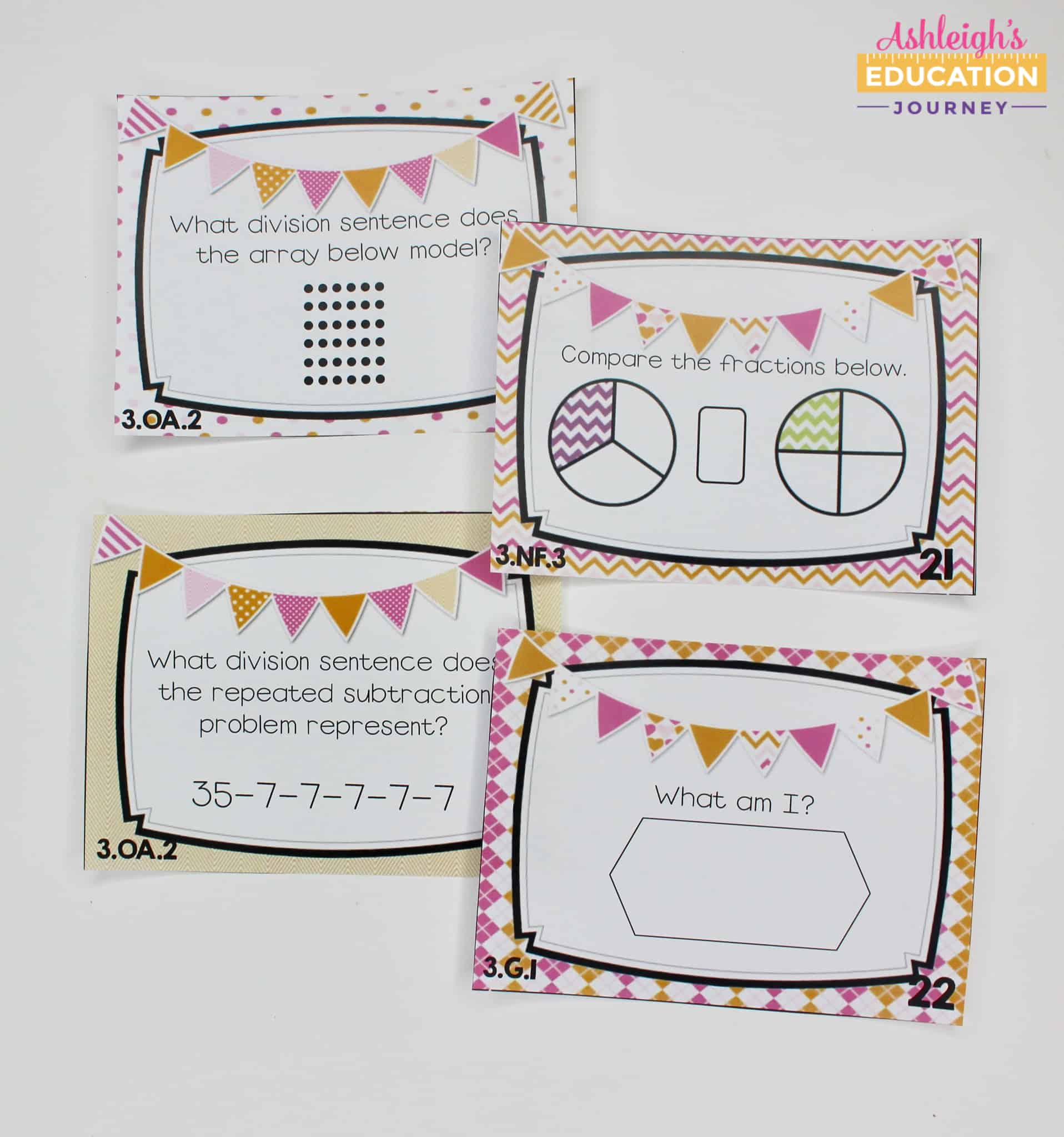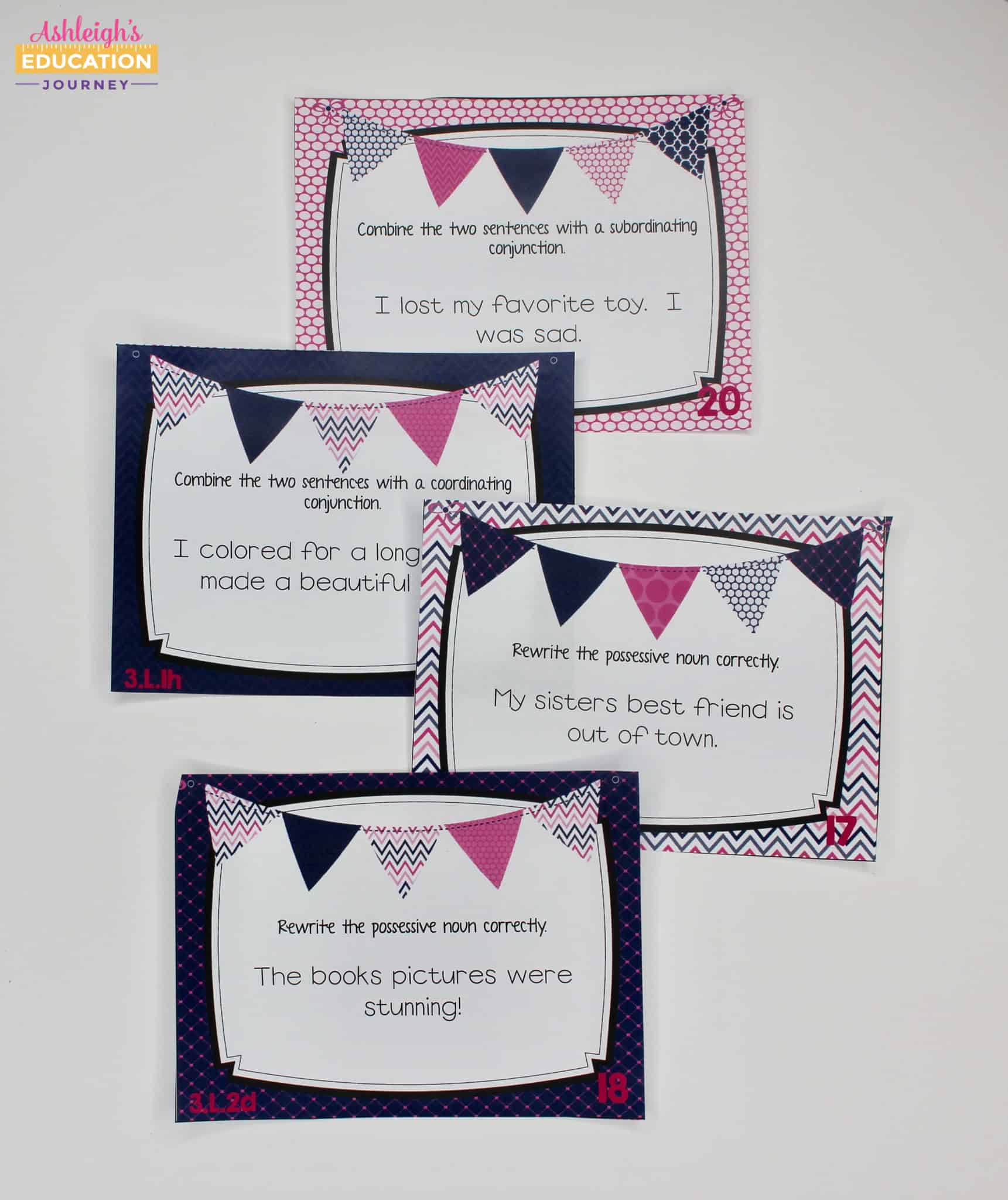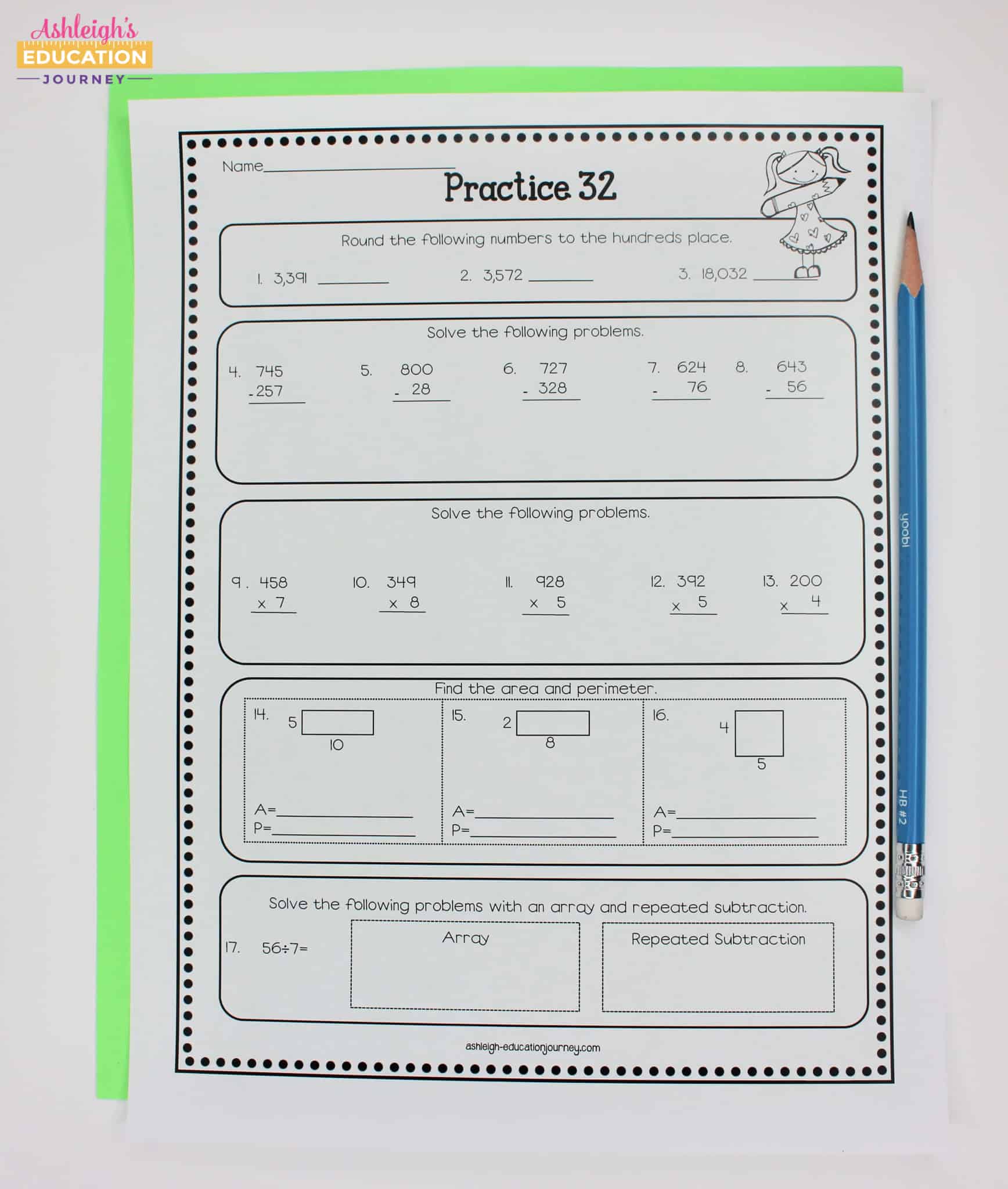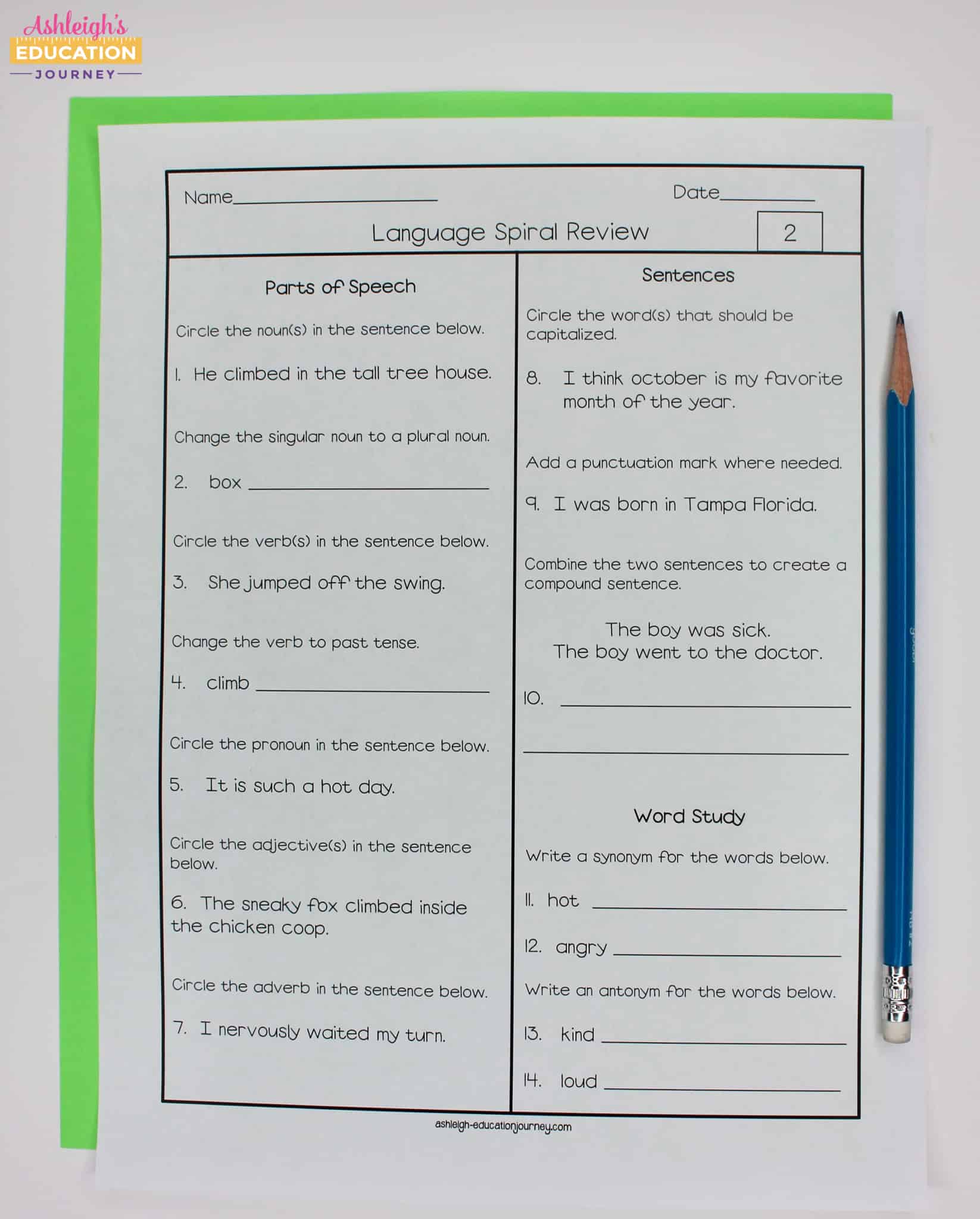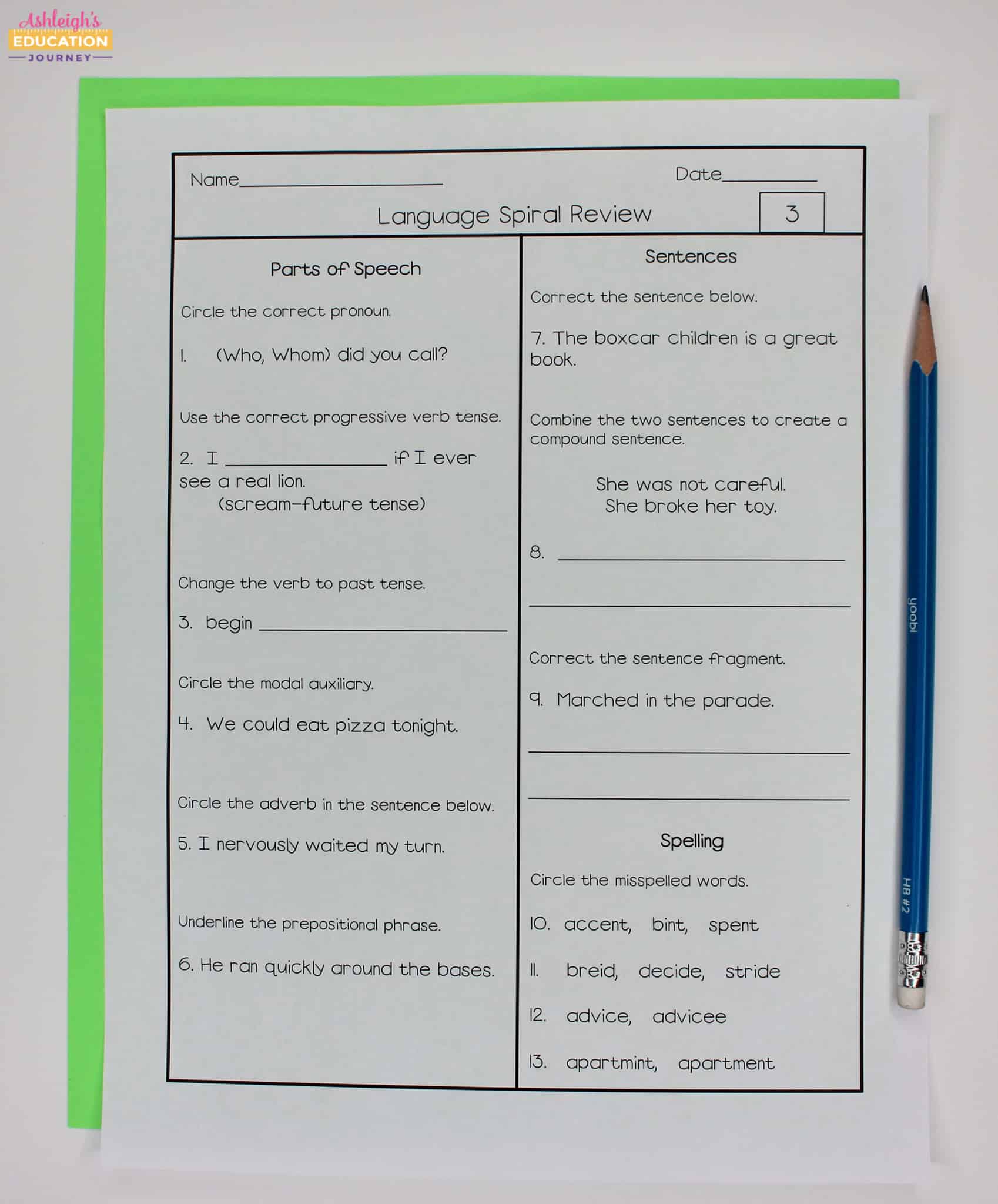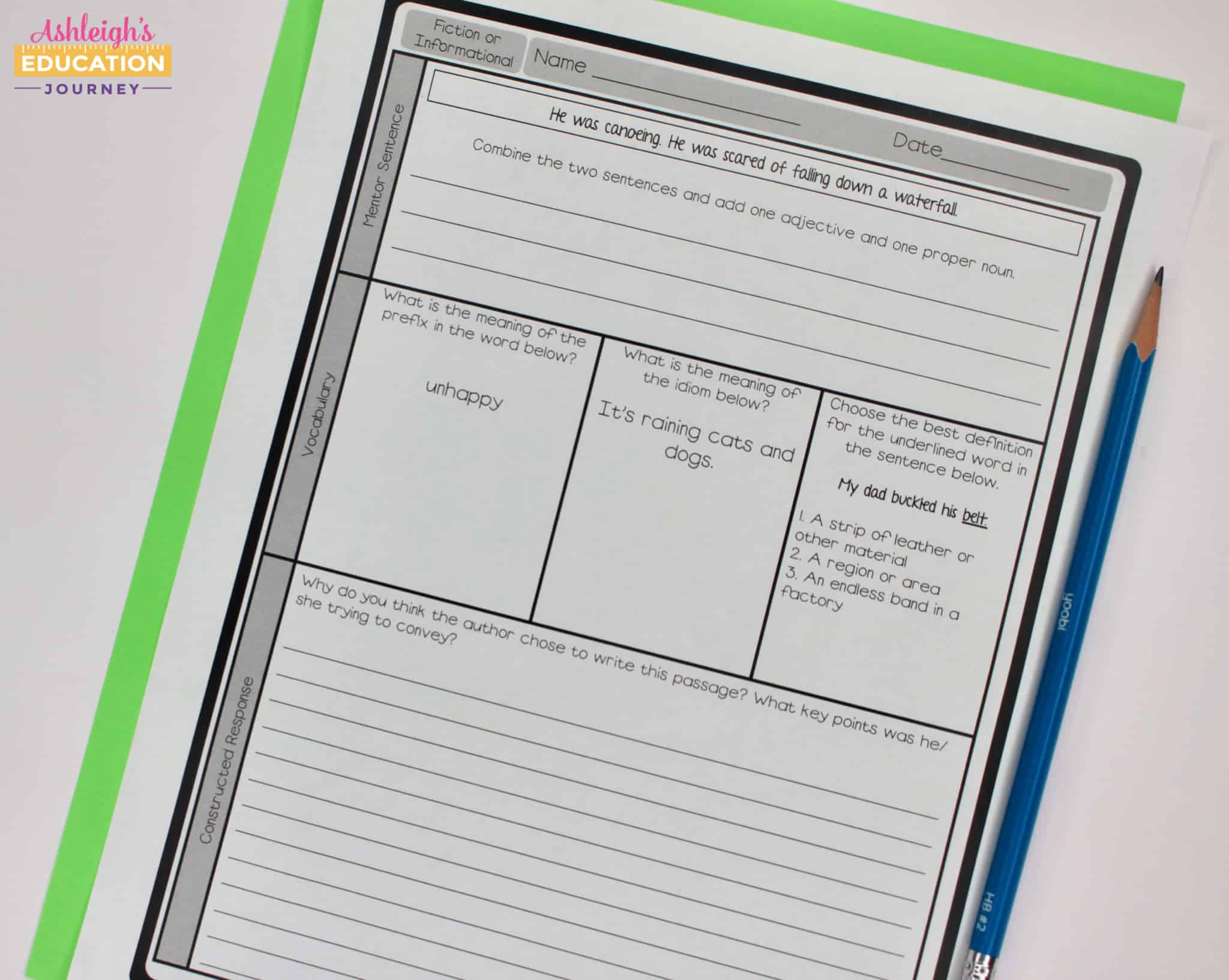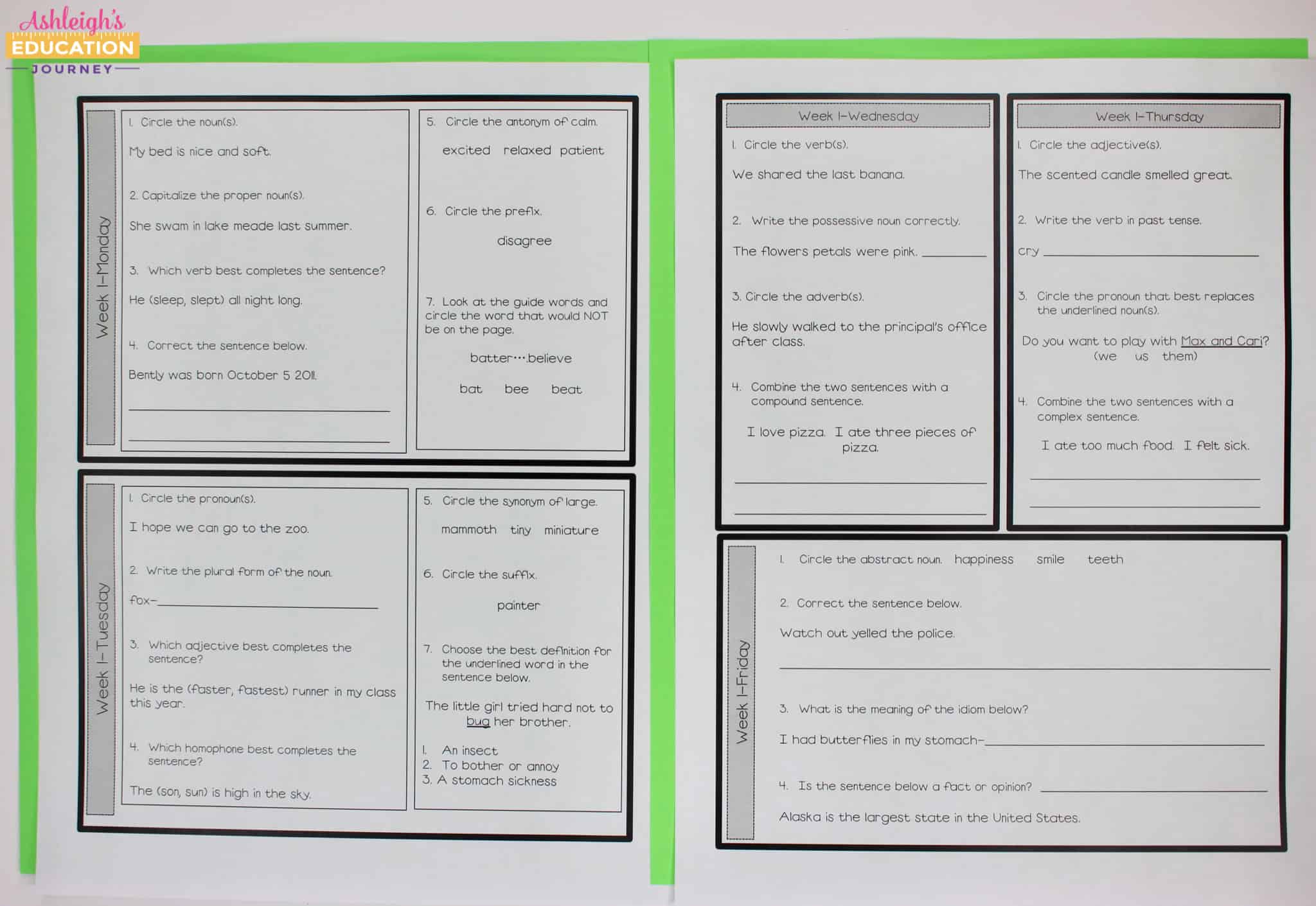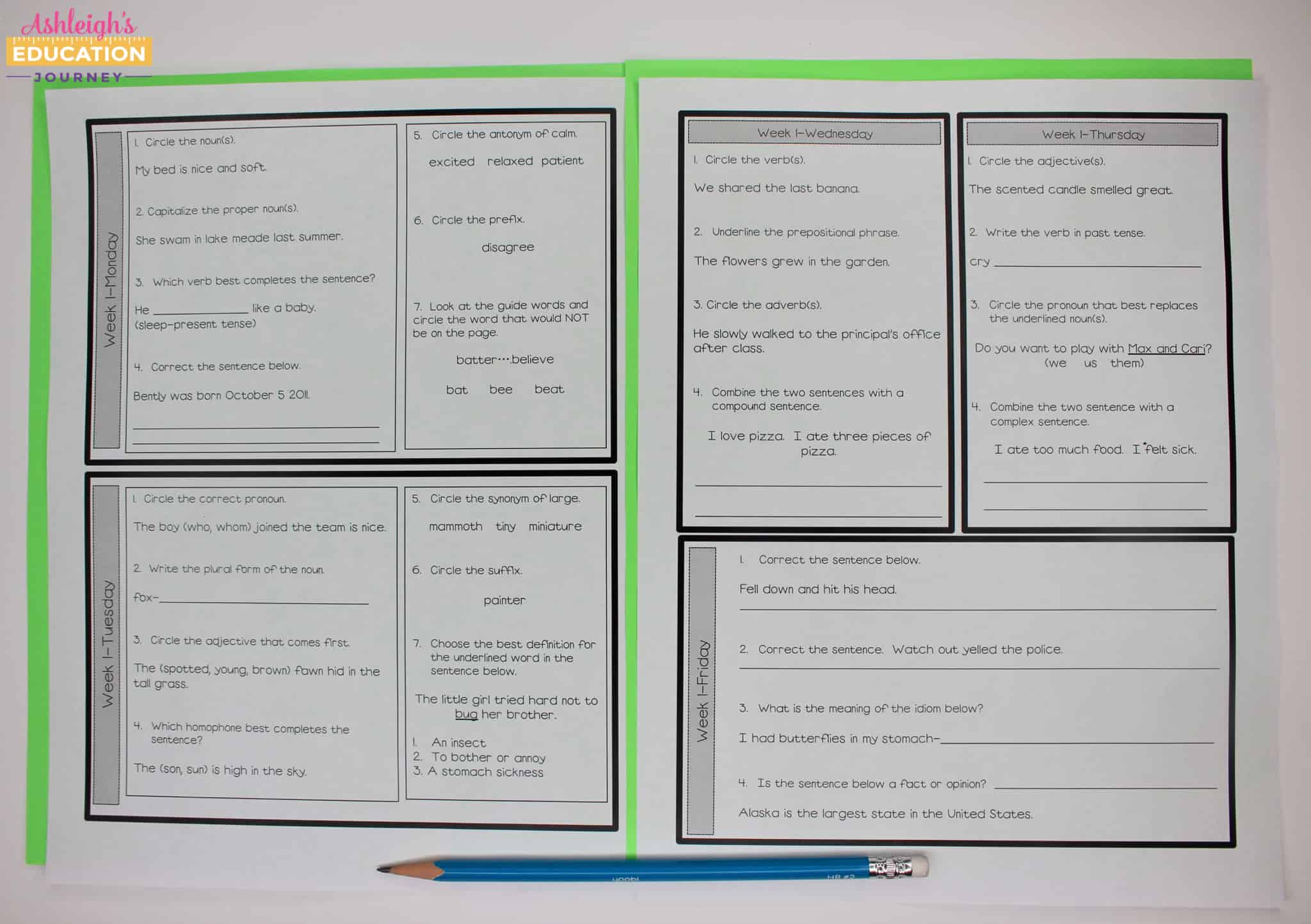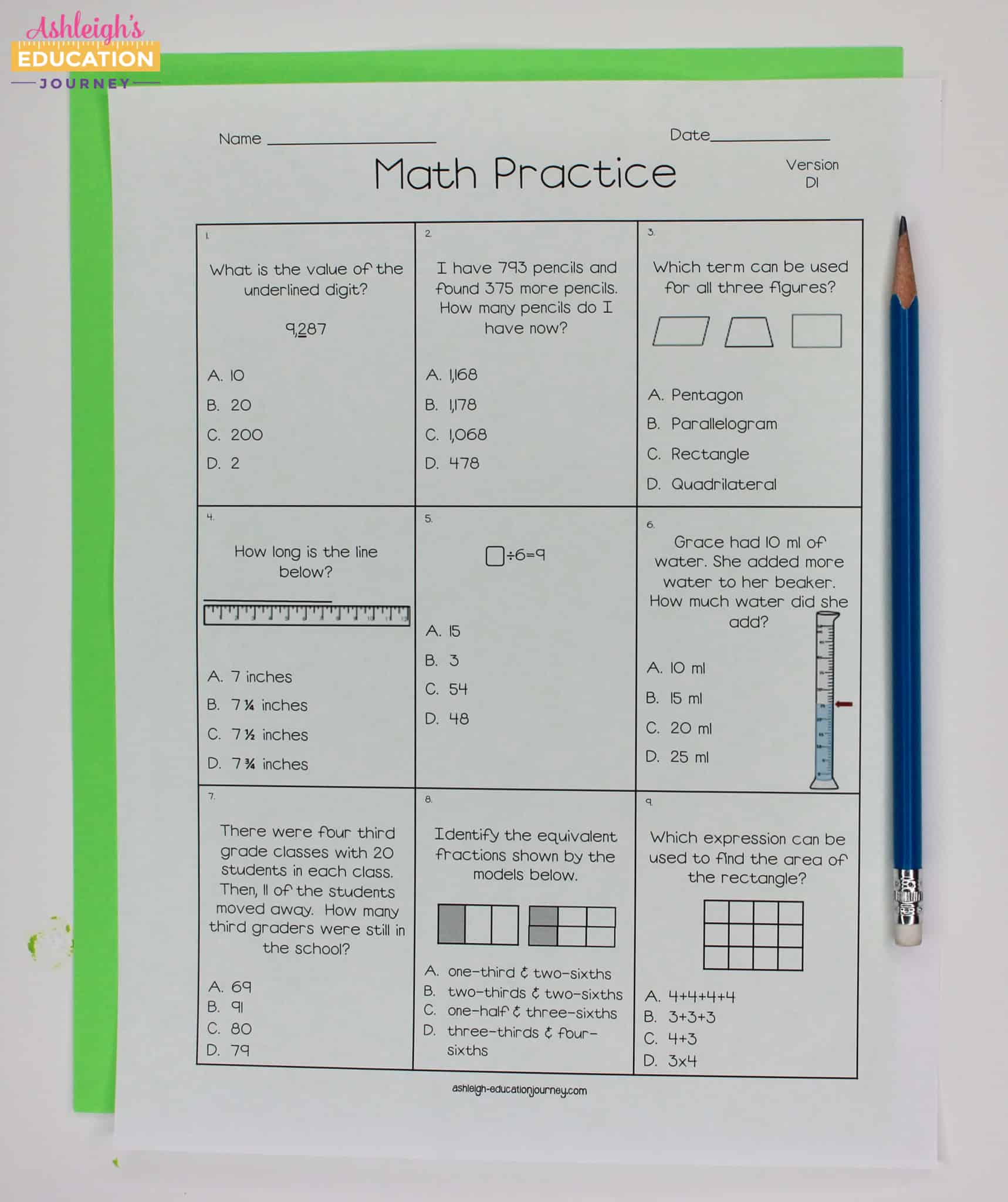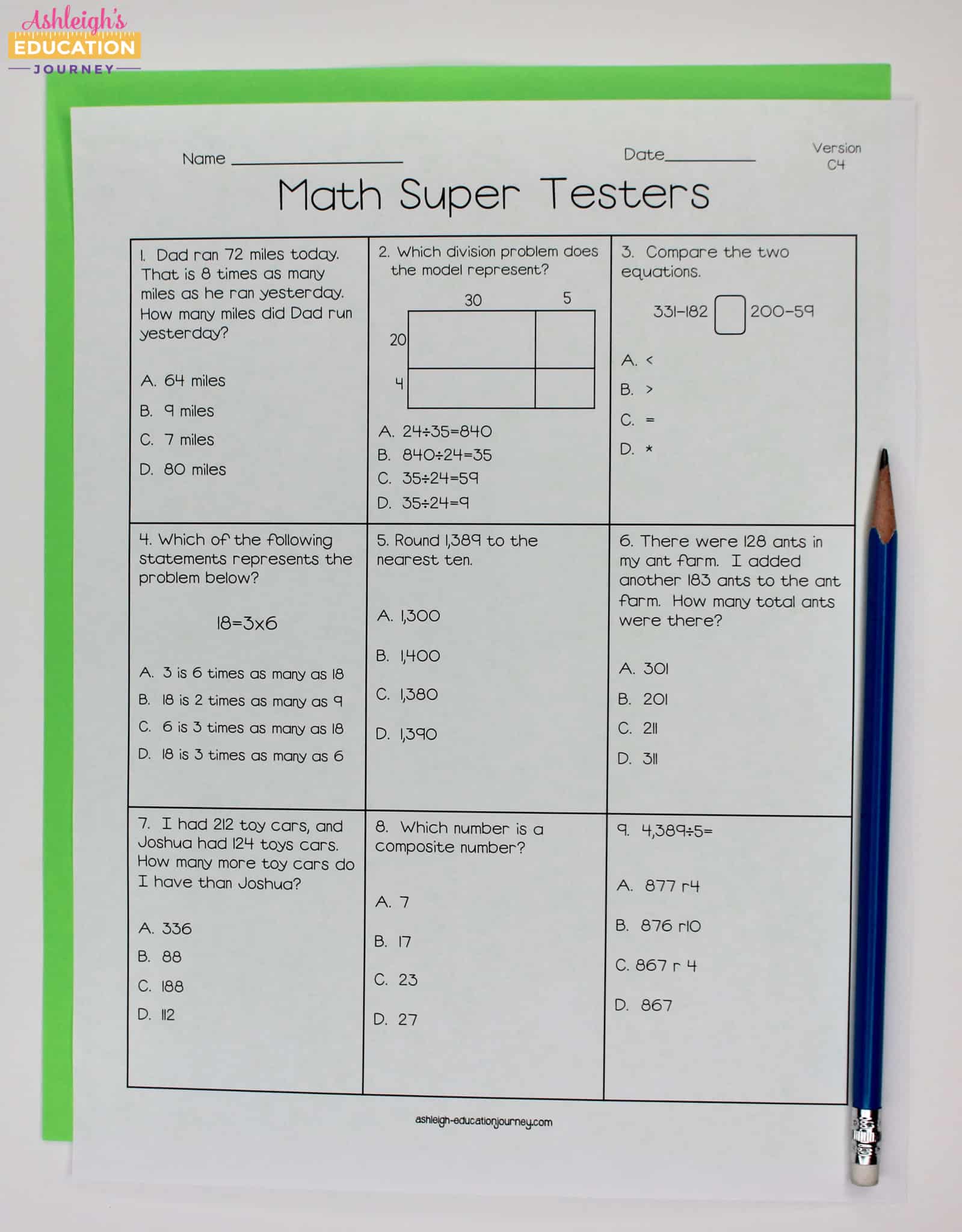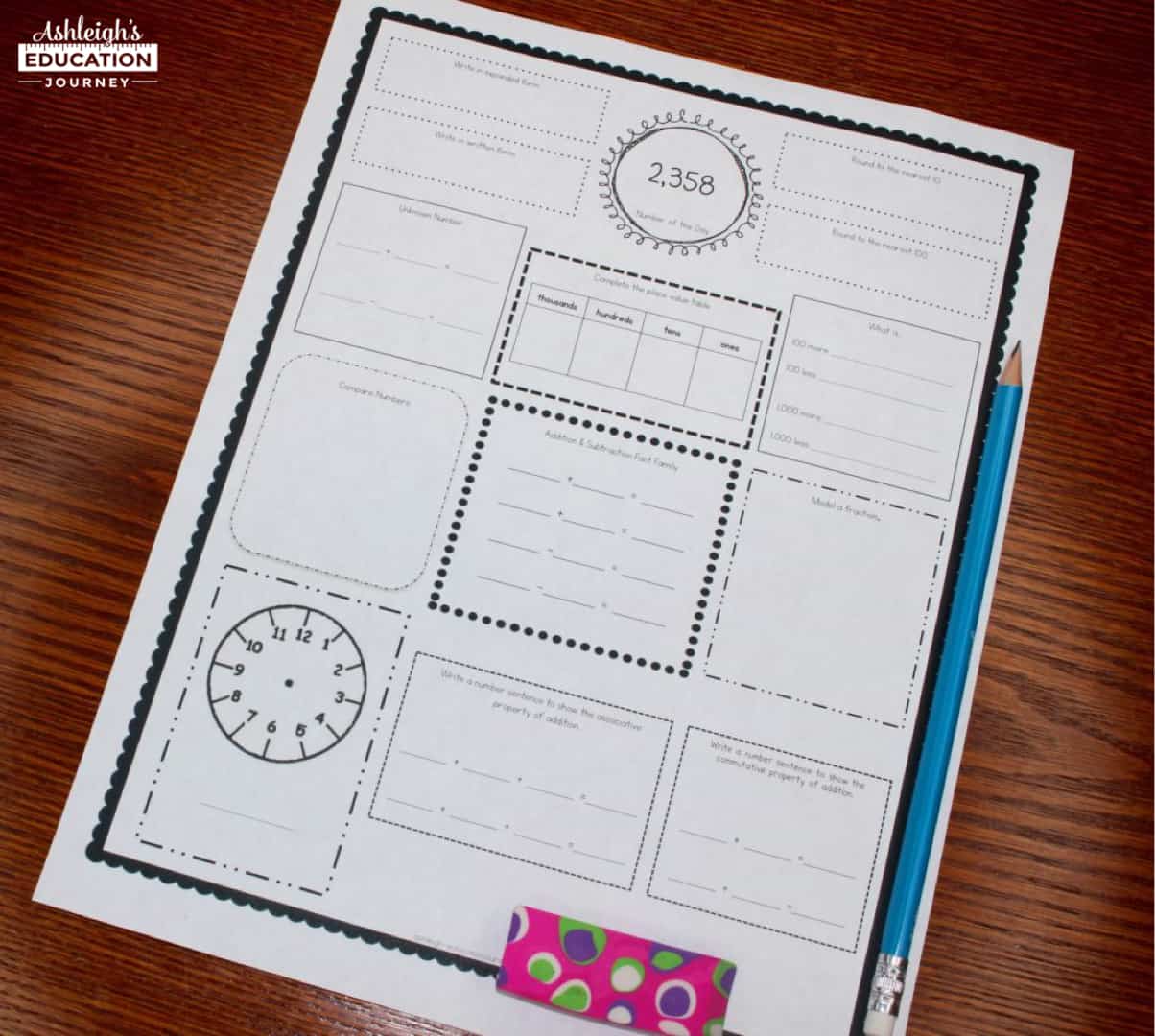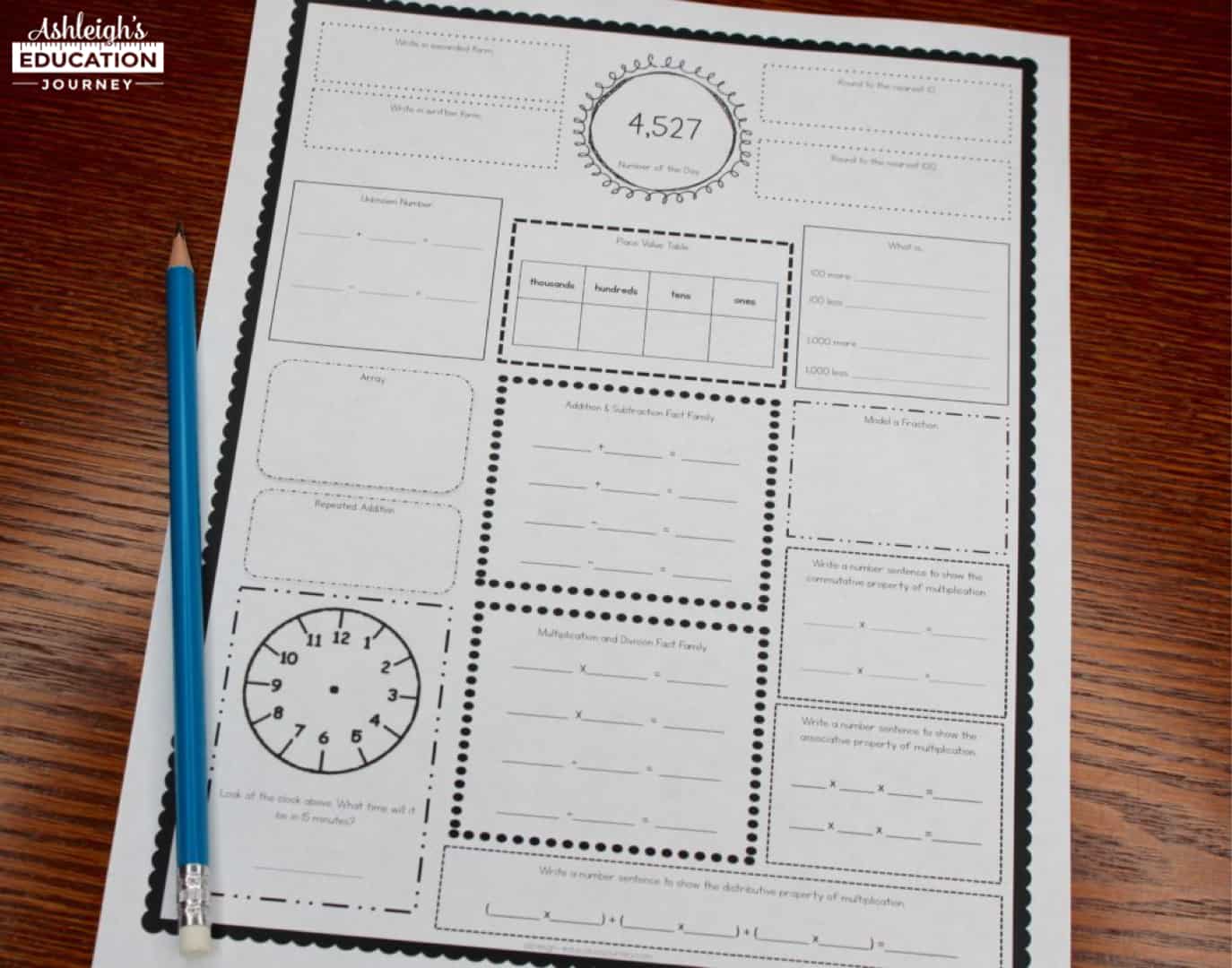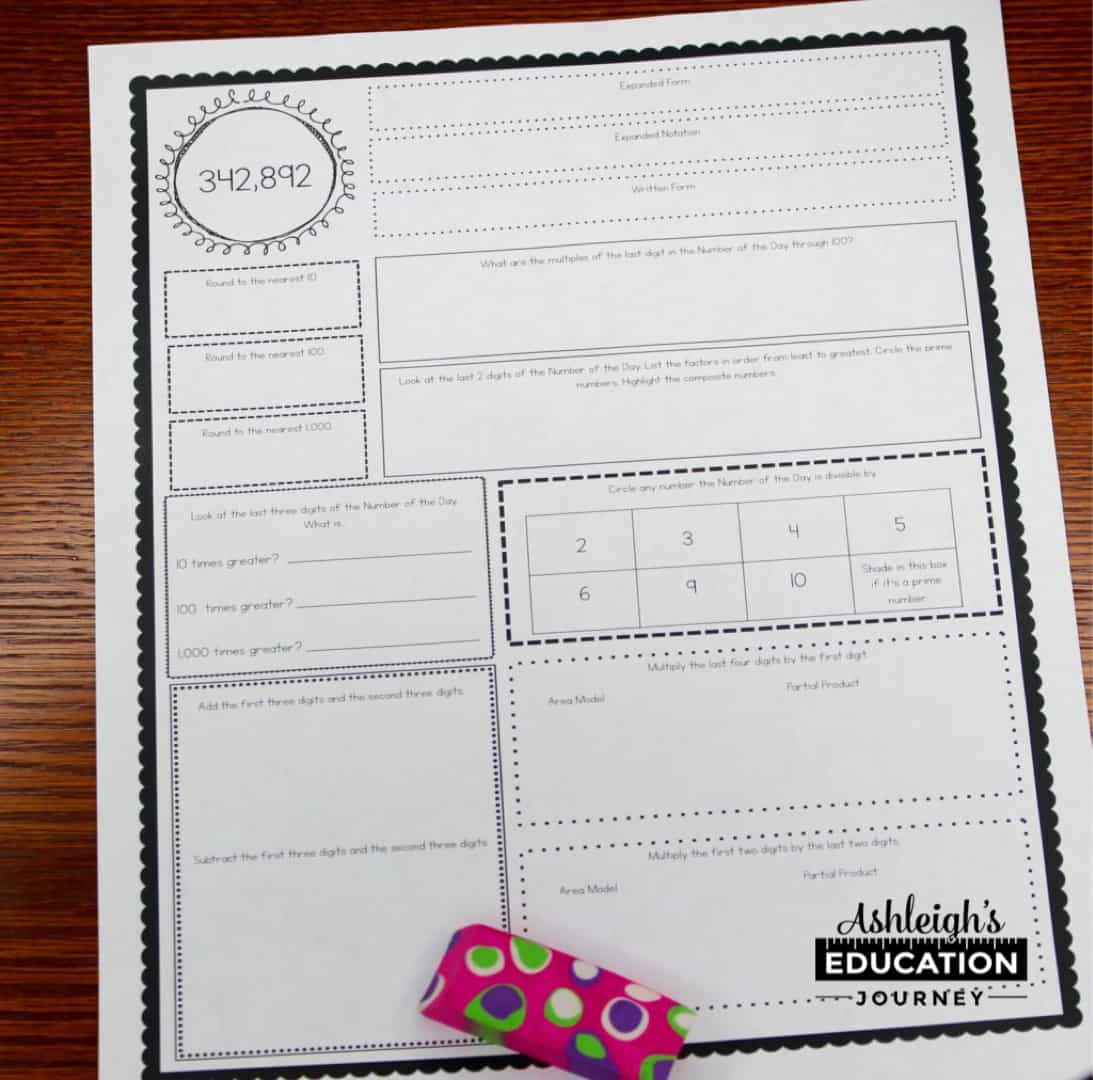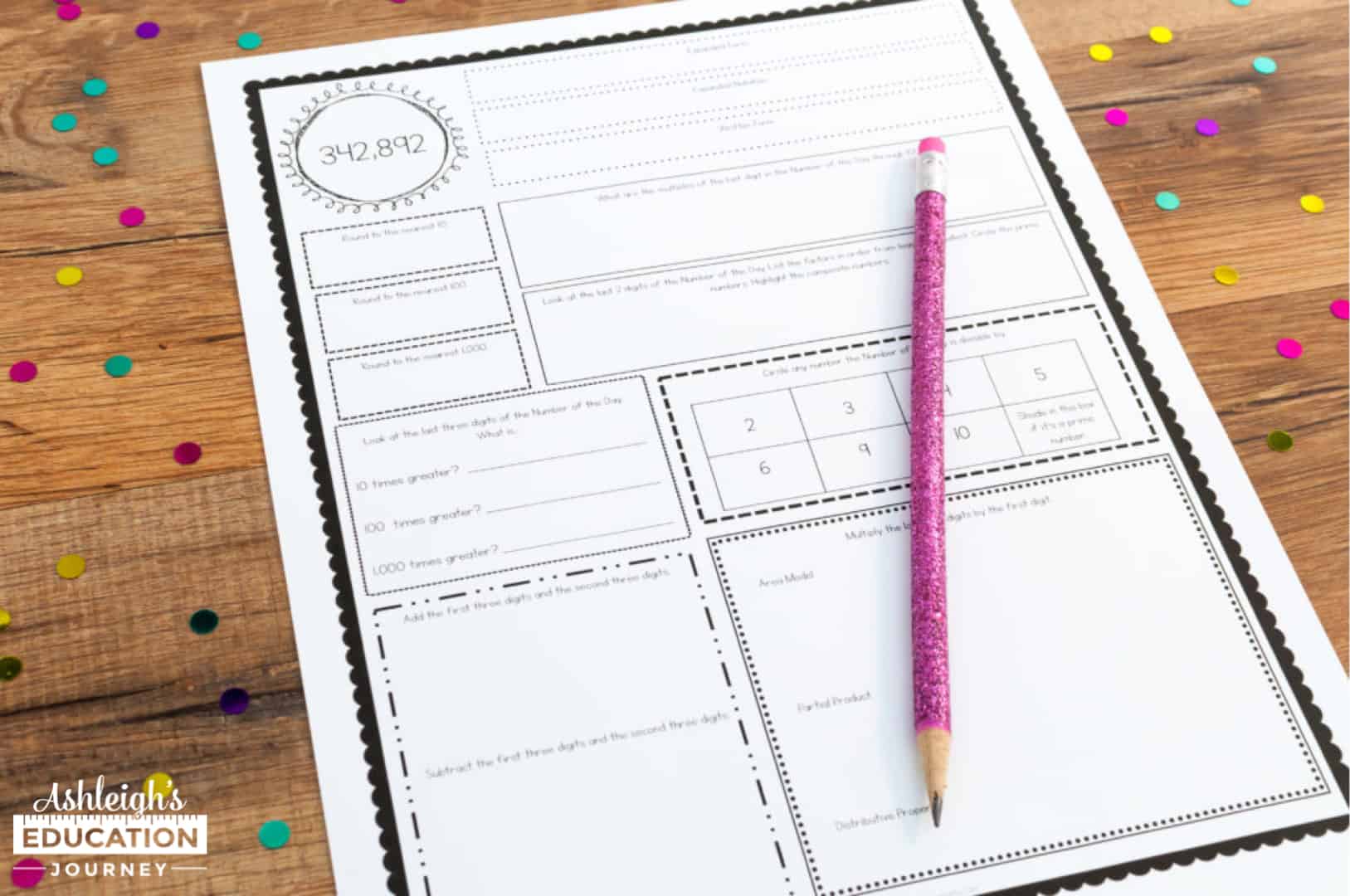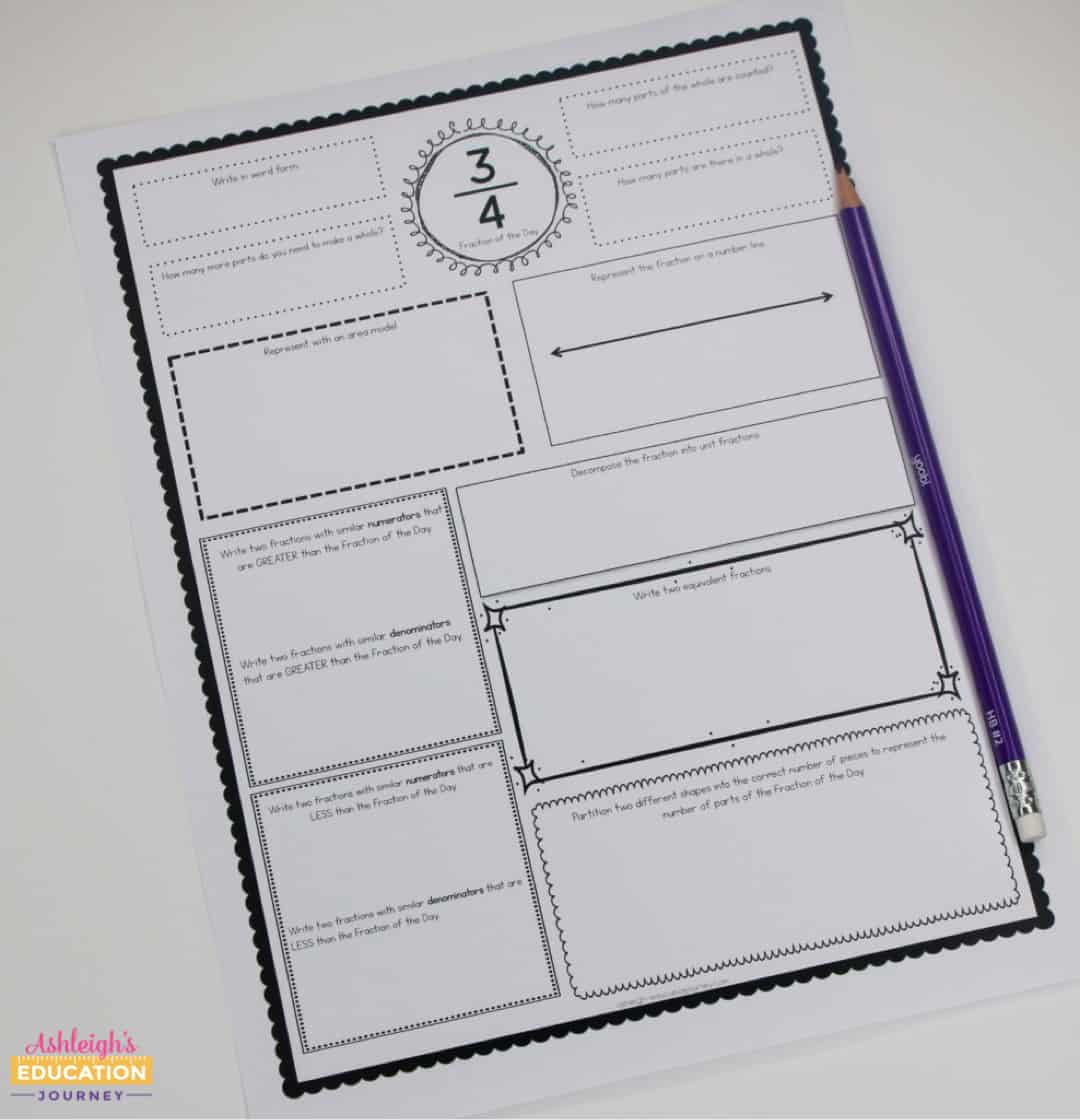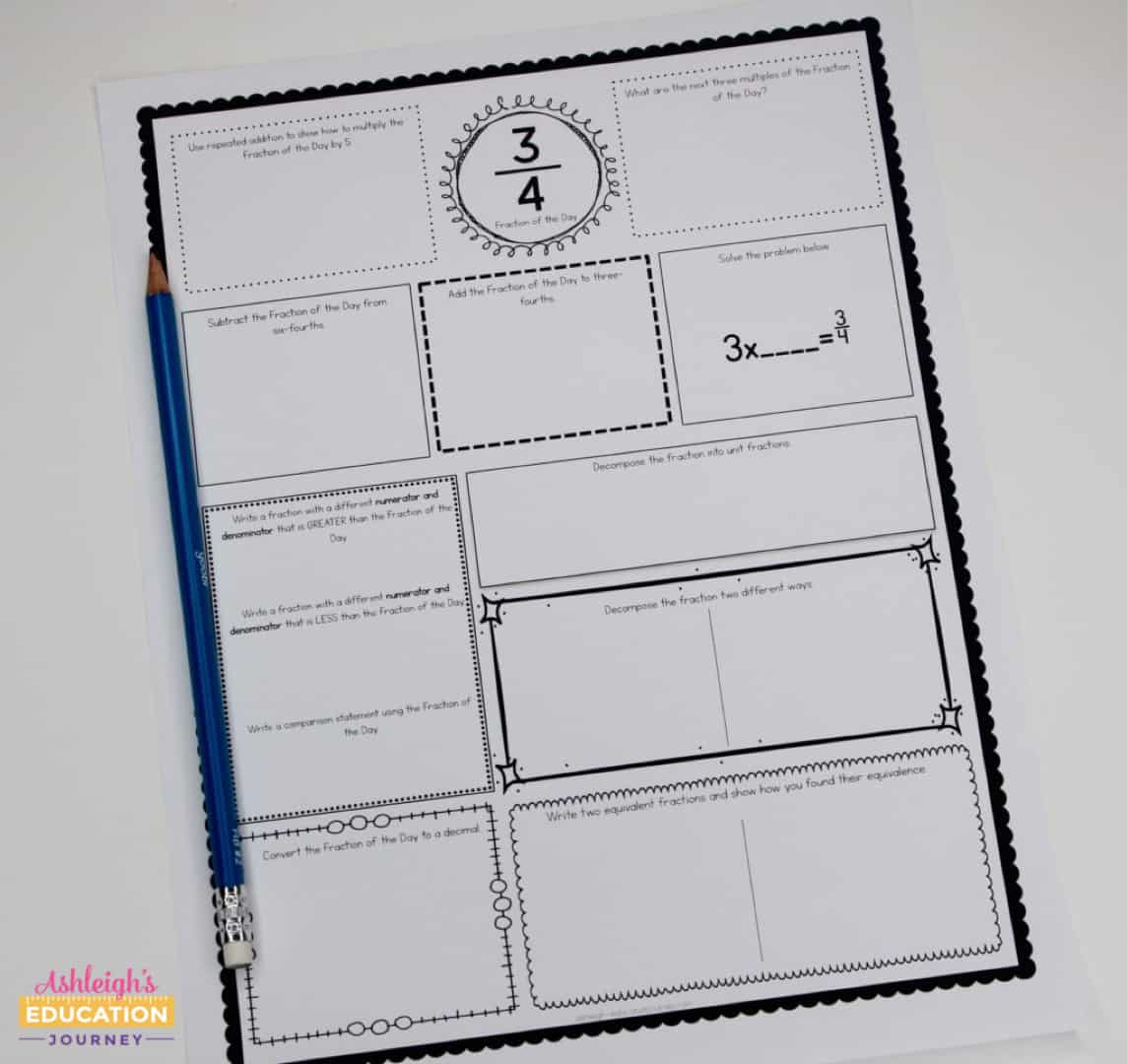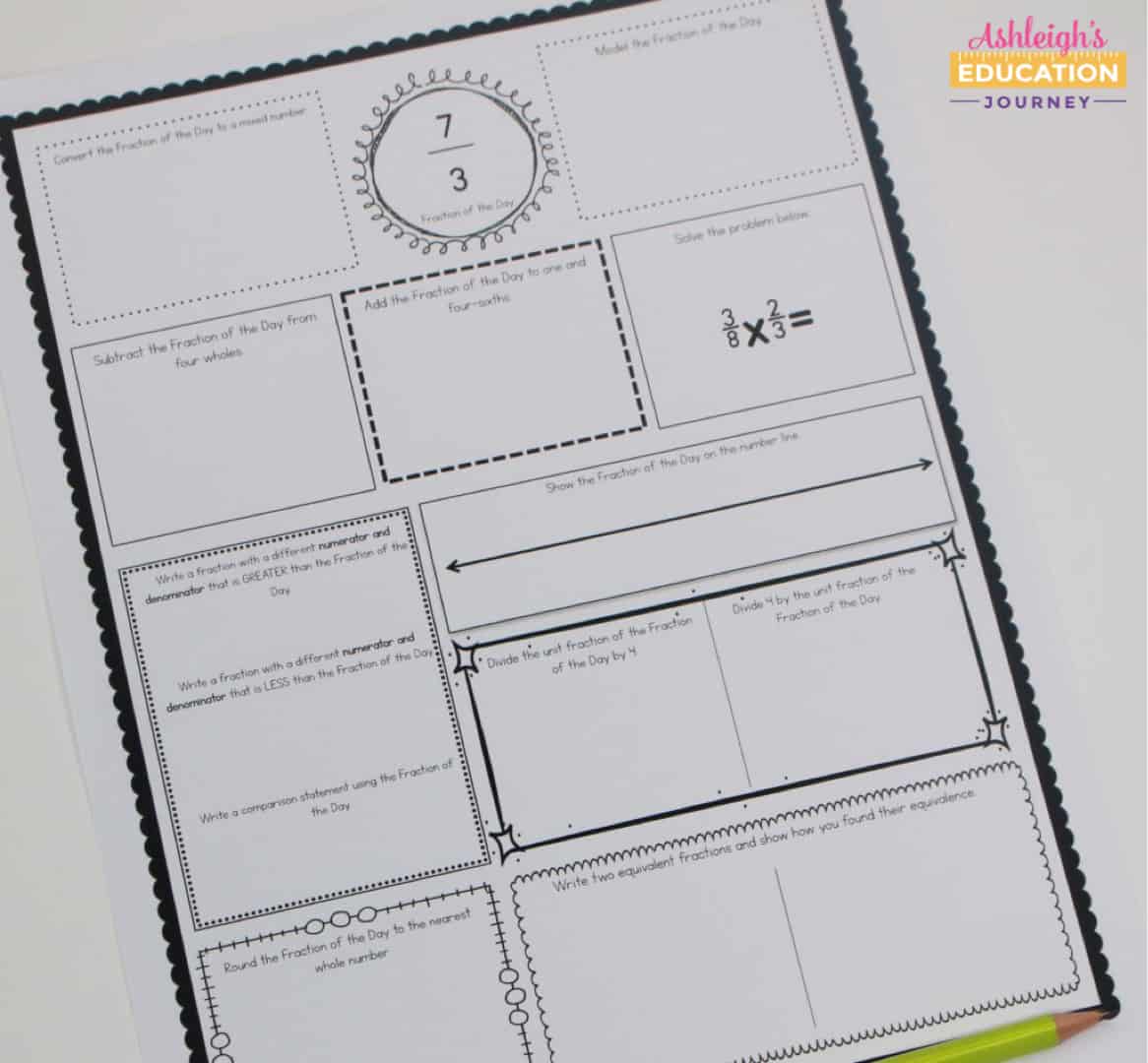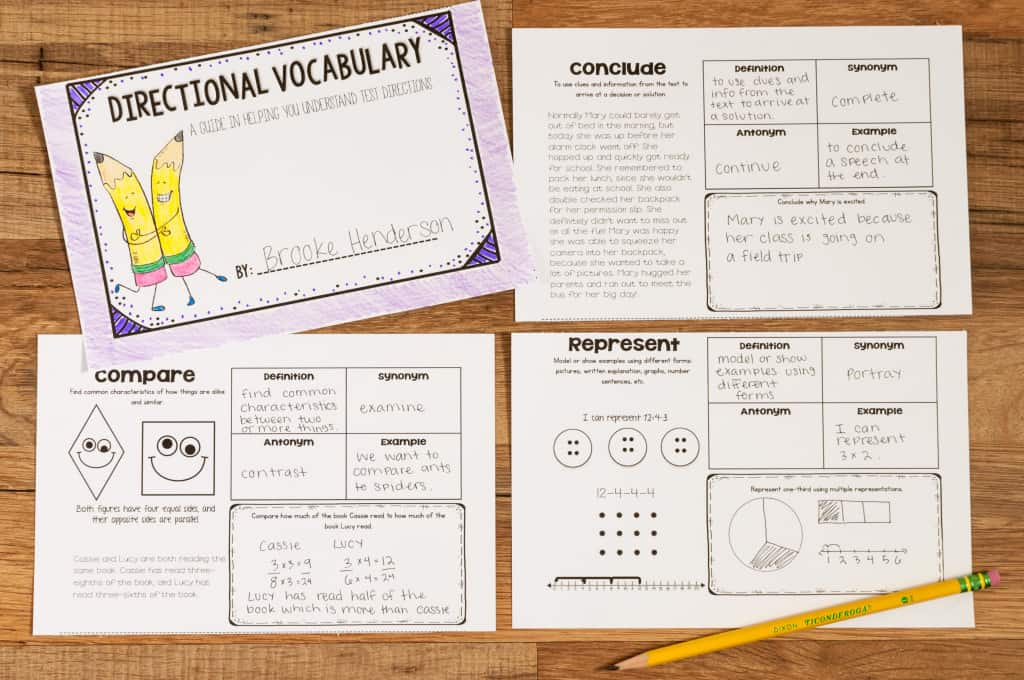
Who has ever experienced this scenario? You spend weeks conceptually teaching fractions. You incorporate hands-on activities, multiple models and visual representations. Your students complete a variety of problem solving tasks in authentic situations. You also have students writing about fractions in their math journals. Then a few weeks after your fraction unit you have a student ask, “What’s a denominator?” Head meets wall. I imagine we’ve all been there in one way or another. We’ve spent time thoroughly teaching a concept, but once we leave that concept, students begin forgetting what they have learned. This is why consistent spiral review is so important for students. If you’re like me and need to see the research behind the practice, I highly recommend the book Why Don’t Students Like School by Daniel Willingham. The book shares how students’ minds work and how to review to promote concepts being stored in students’ long term memories.
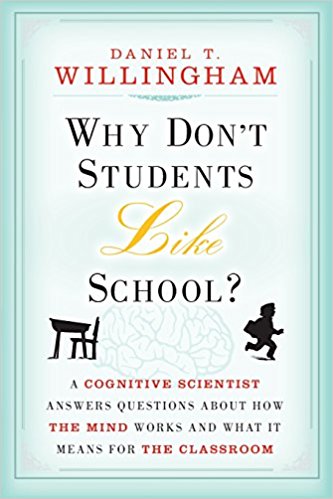
Spiral review is when skills that have been previously introduced and taught are reviewed throughout the school year. Spiral review provides students with a chance to strengthen areas they might not have completely mastered early in the school year. It significantly reduces the amount of class time needed for test prep. When students are able to review and practice material over long periods of time, they are more likely able to store and receive that information and content from their long-term memory. This is why I like to add a mix of spiral review into my daily instruction. It keeps challenging skills and concepts fresh in students’ minds and prevents them from forgetting content taught early in the year.
I don’t recommend teaching or introducing concepts through spiral instruction, because students need time to master concepts. There is no way I would expect my fourth graders to grasp fractions in just a week or two of fraction instruction. There is a great deal of research, including the Institute of Educational science, showing that spiraled review has been shown to positively impact student learning. However, spiraled instruction has not been shown to improve student outcomes.

Since most students typically don’t have long attention spans, I try to keep my spiral review short and to the point. I don’t like to spend excessive amounts of time on spiral review, because I need everyone focused for those lessons-not to mention I don’t have any extra time to spare!
When I do assign a spiral review, it’s essential for me to discuss and correct the review with my class. This is when my students get valuable feedback, and it allows me to assess student learning. When I studied brain research for my Ed.S., the one thing that stuck with me more than anything is that practice does not make perfect. Instead, practice makes permanent. Practice without guidance and feedback is almost counterproductive, especially if students are practicing a procedure or strategy incorrectly. If we practice something the wrong way over and over again, we permanently engrave the wrong action into our habitual responses. It is important for us to not only provide opportunities for students to practice, but to practice correctly.
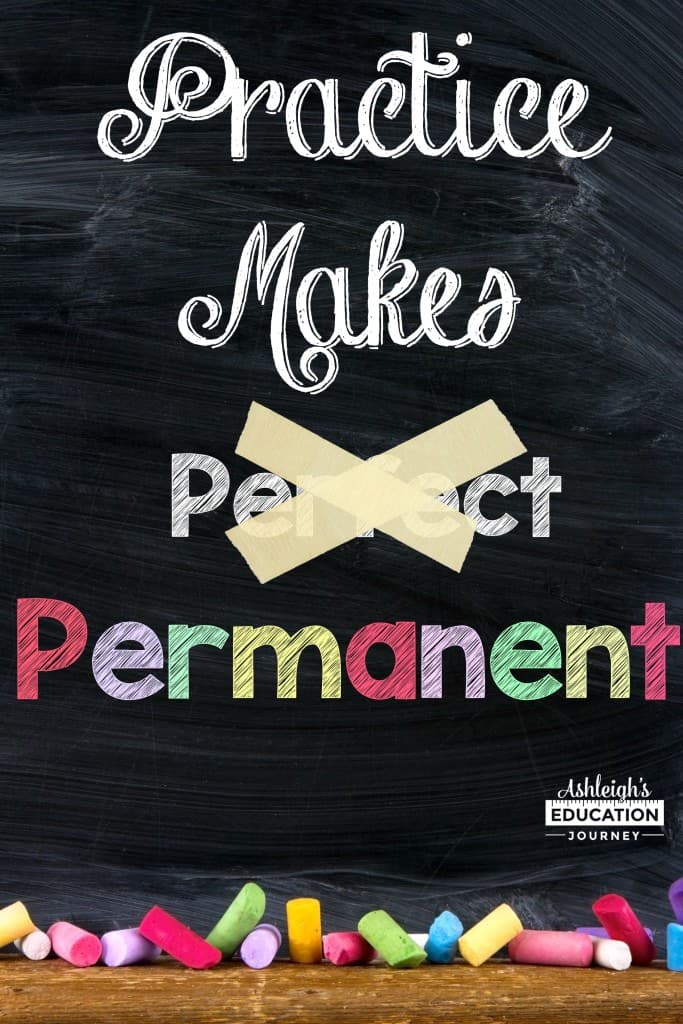
Below are a few ways I incorporate spiral review into my classroom. Hopefully, you’ll be able to get a few ideas and find new ways to incorporate spiral review into your daily instruction!

I always make a point to incorporate at least one or two review centers in language arts and math. We’ll play a game that reviews a previously taught concept, and add a set of spiral review task cards to my math and language arts centers. I created a set of task cards for each month of the school year. Each month has a similar look but different color scheme, so these task cards can really be used at any time of the year. August begins with a review of second grade standards, and then shifts to the more basic third grade standards. They progressively increase in scope and difficulty as the year progresses. All previously reviewed skills are included in each set of task cards.: August-second grade review (all standards), September-nouns (common/proper, singular/plural, abstract) capitalization, October-verbs (regular, irregular, tenses), November-pronouns, possessives & commas in addresses, December-subordinating and coordinating conjunctions & simple, compound, and complex sentences, January-adjectives & comparative and superlative adjectives, February-adverbs, March-punctuating dialogue, April and May-all standards
These are all sold as individual months, as well as in money saving bundles!

I don’t send home much homework, and what homework I do send home is a spiral review. I have two different options that I chose from, but I don’t try to use both formats, because I don’t want to overwhelm my students with an abundance of homework. Instead, I chose whichever version I think my students will benefit from the most. I don’t like to assign homework on something my students just learned in class, because many students will need reteaching. Instead, I use homework to have my students practice skills they have already learned.
The picture below shows my Third Grade Math Review, but I also have Fourth Grade Math Review. These worksheets are perfect for homework since they review essential math skills in a very basic format. There is a sequence of 33 math worksheets that cover multiple skills. The review worksheets begin with a second grade review and become progressively more challenging as the year progresses. By the end of the school year, students will solve addition, subtraction, multiplication, and division problems, as well as area, perimeter, and fraction problems.
This picture shows my Third Grade Spiral Language Review. This reviews the third grade Common Core Standards language skills through a spiral review worksheet. There is one worksheet for each week of the school year for a total of 36 worksheets. The skills reviewed include: Nouns (identify, possessive, plural), Verbs (identify, tense, subject & verb agreement), Adjectives (identify), Adverbs (identify), Pronouns, Capitalization, Punctuation, Spelling, Synonyms, and Antonyms.
I also made a 4th grade version of the spiral language review. The skills reviewed include: Relative Pronouns, Relative Adverbs, Progressive Verbs, Modal Auxiliaries, Adjectives (ordering adjectives and identifying adjectives), Prepositional Phrases, Punctuation, Capitalization, Combining Sentences, Spelling, and Homophones.
This is the second option of homework that I select from. This is my Third Grade Language Arts Practice. There are three parts to this product. The first part gives students a brief skill review of basic third grade skills. The second portion contains three vocabulary based questions. These questions include homophones, prefixes, suffixes, and idioms. The third portion is centered around preparing students for extended constructed response problems. These are all problems that require critical thinking and the application of reading comprehension strategies. These constructed response questions can be used with almost any text written on a third grade level (or higher). There are questions for informational and fiction passages.
This is the math version of the second option Third Grade Math Practice and Constructed Response. There are three parts to this product. The first part gives students a brief skill review of basic third grade skills. The second portion contains three one-step word problems. All of the word problems are a mixture of addition, subtraction, multiplication, and division. The third portion is centered around preparing students for extended constructed response problems. These are all multi-step problems that require critical thinking and the application of math concepts.
I have not yet made a fourth grade version of the second option of homework, but it’s certainly a possibility!

Morning Work
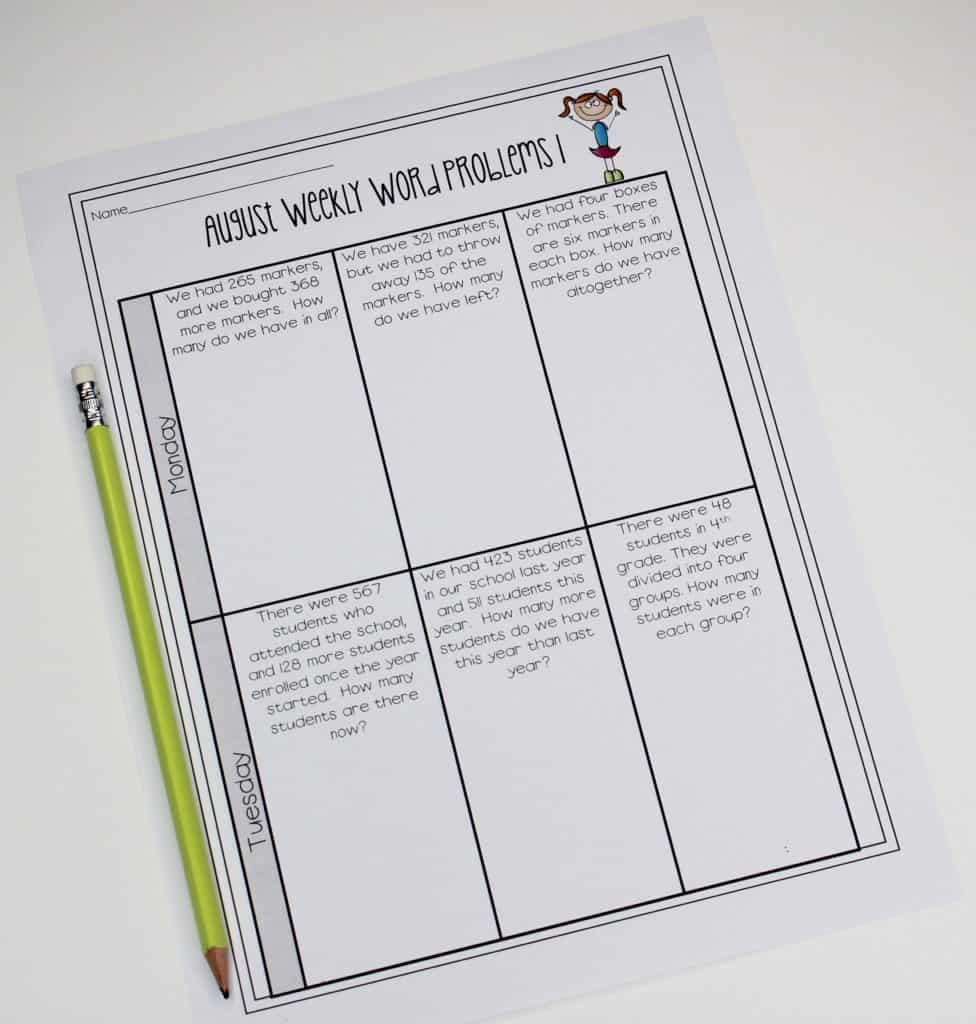
I also have Third Grade Language Arts Morning Work that is organized by the days of the week. This is a great way to reinforce and review all of those tricky grammar and vocabulary skills. There are 36 weeks worth of questions, and each week is broken into Monday-Friday sections to keep the review short and sweet.
This is my Fourth Grade Language Arts Morning Work, which is set up in a similar format to geared toward fourth grade standards.
One thing that was a real eye opener for me was when I changed my weekly math assessment from an open ended format to a multiple choice format. I couldn’t believe how much my students’ scores dropped from one week to another. With a little experimentation, I realized that it wasn’t the content that gave my students trouble. Instead, it was because my students had no idea how to take a multiple choice test. I created a series of spiral review assessments written in a multiple choice format. I like to begin using these assessments at the beginning of the year and continue using the same style of assessments all year long, so I created six different versions that all increase with difficulty and range of questions as the year progresses. There is a total of 30 multiple choice math assessments that are a spiral review of almost all of the math Common Core Standards. I give this assessment in lieu of my regular morning work on Fridays. My students complete the assessment independently during their morning work time. We discuss each question, and students keep track of what they’ve missed.
My favorite part of the entire activity is when I complete a line plot that shows how many students missed each question. I cannot tell you how much I’ve learned from our line plots. I has also surprised me that my students love seeing the line plots too. Each week, they try to collectively beat our line plot from the week before, and we always discussed which problem was the most frequently missed and why it was difficult.
Third Grade Math Test Prep
Third Grade Language Arts Test Prep

Number of the Day
Utilizing a number of the day is a fun way to review key math concepts on a daily basis. I now have six different versions of my original Number of the Day, because we all have students with various needs and various challenges to our curriculum. The first version is primarily for third grade. In this version students write the number in expanded form and written form, and they round it to the nearest ten and hundred. They also complete a place value table and determine what is 100 and 1,000 more and less than the Number of the Day. Students compare numbers, complete an addition and subtraction fact family, and model a fraction using the Number of the Day.
The second version is also for third grade. It’s very similar to the original version, but in this version students create arrays, solve multiplication with repeated addition, and use the distributive property to multiply.
I created the third version for my students who weren’t quite ready for the third grade versions of the Number of the Day. This includes similar problems, but students work with 3-digit numbers, rather than 4-digit numbers. The fourth grade version contains 6-digit numbers, and students write the numbers in expanded form, expanded notation, and written form. They also round the number to the nearest ten, hundred, and thousand. To review those tricky factors and multiples, students writ e the multiples of the last digit of the Number of the Day through 100. They also look at the last two digits of the Number of the Day and list the factors of that number and circle the prime numbers and highlight the composite numbers. Students determine what is ten times, one hundred times, and one thousand times greater than the last number made by the last three digits of the number of the day. There is a divisibility table, and students circle any number the Number of the Day is divisible by. There is also an addition and subtraction problem, as well as a multiplication and division problems students solve with partial product/partial quotient and an area model.
Fraction of the Day
I’ve also created a Fraction of the Day. I do not use this review until I have completed my fraction instruction, because I don’t want it to take the place of conceptual instruction and hands-on lessons. I’ve created three different versions in the Fraction of the Day file, because I wanted to provide flexibility for different state standards. In the third grade version, students write the Fraction of the Day in written form and determine how many more parts are needed to make a whole. Students represent the fraction with an area model and number line. They also write two fractions with similar numerators that are greater than the Fraction of the Day, two fractions with similar denominators that are greater than the Fraction of the Day, two fractions with similar numerators that are less than the Fraction of the Day, and two fractions with similar denominators that are less than the Fraction of the Day. Students also decompose the fraction into unit fractions and write two equivalent fractions.
Fourth Grade
In the fourth grade version, students use repeated addition to show how to multiply the Fraction of the Day by a given whole number. They also identify the next three multiples of the Fraction of the Day and list the next three multiples. Students add and subtract the Fraction of the Day from a given fraction and identify the missing number in a multiplication equation where a whole number, multiplied by the missing fraction, equals a given fraction. Students write one fraction with a different numerator that is greater than the Fraction of the Day, one fraction with a different denominator that is greater than the Fraction of the Day, one fraction with a different numerator that is less than the Fraction of the Day, and one fraction with a different denominator that is less than the Fraction of the Day. Then, students decompose the fraction into unit fractions and write two equivalent fractions.-Students may use any strategy to generate two equivalent fractions to the Fraction of the Day.
Fifth Grade
In the fifth grade version, students convert the Fraction of the Day to a mixed number and model the Fraction of the Day. They add and subtract the Fraction of the Day from a given fraction with an unlike denominator and solve a fraction multiplied by a fraction problem. Students write one fraction with a different numerator that is greater than the Fraction of the Day, one fraction with a different denominator that is greater than the Fraction of the Day, one fraction with a different numerator that is less than the Fraction of the Day, and one fraction with a different denominator that is less than the Fraction of the Day. Students divide the unit fraction of the Fraction of the Day by a given whole number and divide a given whole number by the unit fraction of the Fraction of the Day. Finally, students write two equivalent fractions.
While that is certainly a lot of spiral review, when its broken into morning work, homework, and centers it’s manageable for students, and it prevents that end of the year stress in prepping your students for their high stakes test!

